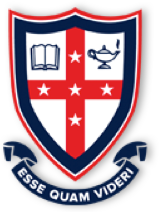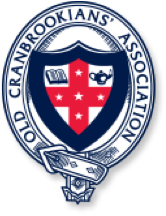Stories
Sailing and Swimming at Cranbrook as a Foundation for Olympic Achievement—A A James
A A James was on a train heading to Central when he was being interviewed for this story, about to skipper a yacht in the Whitsundays for his daughter’s 40th. But he sails much less these days, mainly because he did “100 years of sailing in 25 years” when he competed locally and internationally on a number of occasions. This gives some insight into the work that Tony put into his sailing career, which he says he saw modelled first-hand when he was on the swimming team at Cranbrook, training and competing alongside future Olympic champion, Murray Rose. The two boys used to train together in the mornings before school—Tony would be on an inflatable surf planer wearing flippers, while Murray swam beside him without equipment, and Tony could barely keep up with him. Rose was a “very stylish swimmer, and bloody fast.”
There is a photo in the school corridor of the 1955 swimming team after they’d won the Combined Associated Schools competition, in which there were three future Olympians: Murray Rose (swimmer), Tony James (sailor), and Sven Coomer (pentathlete). Tony had arrived at Cranbrook as a boarder in 1949, and he says that the synergy of those people coming together in ‘55 was in many ways just lucky. But he also credits Murray Rose’s influence on the swimming team, who “accelerated and fostered” the achievements of his teammates. Rose, then also Captain of the swimming club, helped to supervise the team along with the swimming instructor at the time, Sam Herford. He set an example of what it takes to get to the top, suggesting the team train harder and showing them how. Rose was also genuinely encouraging. Tony was a relay swimmer then, what he calls “a one-lap wonder,” and he remembers Rose often and emphatically telling them how each role was crucial to the relay team.
Tony had also been part of a small group of students at Cranbrook who had started the Sailing Club during 1954, which was probably the first time that Tony started to take sailing more seriously.[1] Later, when he began to work towards the Olympics himself, he kept in mind Rose’s example of attitude and dedication. Tony had left school in ’59 to pursue a cadetship in the shipping trade, but he soon became determined to follow his cousin, Colin Ryrie, who had competed in Sailing in the Melbourne Olympics in 1956 and in the Rome Olympics in 1960. Colin became Tony’s coach.
During the 1960s, while Tony was working full-time, he began training towards selection for the Munich Olympics to be held in 1972. He would practice seven days a week—three nights on the Harbour, two nights in the gym, and two days, both Saturday and Sunday, sailing in competitions. He also met, courted, and married his wife, Pamela West, during this time. Tony says that one of the best experiences in competing in the 1972 Olympics, was walking out into the Opening Ceremony. The team walked onto the arena to the sound of Waltzing Matilda playing to a 100,000-strong crowd. The effect was stunning, and he remembers feeling a great sense of pride to be wearing the ‘green and gold.’
[1] One of the School’s teaching masters, Mr MacGuinness, whose nickname was “the Koala”, became the sailing master. The sailing club occupied “half the rowing shed” in Rose Bay, sailing one or two afternoons a week, and also Saturdays. They also competed in sailing races affiliated with the Double Bay and Vaucluse Yacht Clubs. –From the interview with Anthony James, OC.

